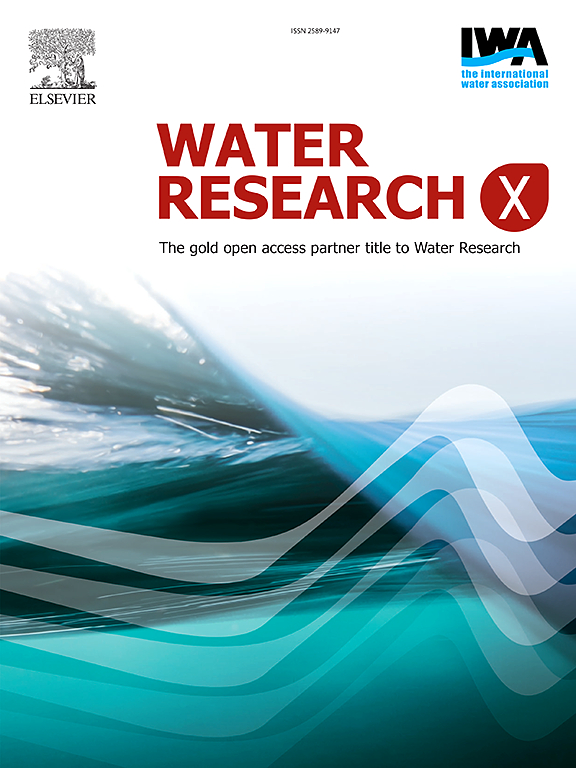Exploring the feasibility of high rate enhanced biological phosphorus removal system driven by diverse carbon source
IF 7.2
2区 环境科学与生态学
Q1 ENGINEERING, ENVIRONMENTAL
引用次数: 0
Abstract
The limited understanding of the mechanism and metabolism with short sludge retention time (SRT) conditions remain a significant challenge, hindering the integration of enhanced biological phosphorus removal (EBPR) into high-rate A/B processes. Previous short-SRT EBPR studies mainly relied on volatile fatty acid (VFA), whereas the diversity of carbon sources in real wastewater treatment plants (WWTP) is much broader and also includes sugars and amino acids.
In this study, a long-term EBPR process with a short SRT was established using mixed carbon sources representative of domestic wastewater, achieving reliable and efficient chemical oxygen demand (COD) and phosphorus (P) removal. Through long-term operation of 680 days, P removal efficiencies were obtained at 97.7 % ± 2.3, 97.6 % ± 4.4 and 92.6 % ± 10.2 with the SRT of 8 days, 5 days and 3 days, respectively. High COD removal efficiency at each stage was also attained. This work demonstrated that mixed carbon sources, such as glucose and VFAs were more favourable for energy transformation by selected phosphorus accumulating organisms (PAOs), compared to amino acids or glycerol. Tetrasphaera-PAOs and Comamonas-PAOs were the two dominant PAOs, and clade shift was observed within Tetrasphaera-PAOs. In summary, this work provides valuable insights into the feasibility of integrating EBPR with short SRT into A-stage high-rate WWTP processes.

探索多种碳源驱动的高效强化生物除磷系统的可行性
对短污泥停留时间(SRT)条件下的机理和代谢的有限理解仍然是一个重大挑战,阻碍了将强化生物除磷(EBPR)整合到高速率a /B过程中。以往的短srt EBPR研究主要依赖于挥发性脂肪酸(VFA),而实际废水处理厂(WWTP)中碳源的多样性要广泛得多,还包括糖和氨基酸。本研究以生活污水为代表,采用混合碳源,建立了一个长期EBPR短SRT工艺,实现了可靠、高效的化学需氧量(COD)和磷(P)去除。经过680 d的长期运行,P去除率分别为97.7%±2.3、97.6%±4.4和92.6%±10.2,SRT分别为8 d、5 d和3 d。各阶段COD去除率均较高。这项工作表明,与氨基酸或甘油相比,混合碳源,如葡萄糖和VFAs,更有利于选定的聚磷生物(PAOs)的能量转化。四虫-PAOs和共虫-PAOs是两种主要的PAOs,并且在四虫-PAOs中存在枝转移现象。总之,这项工作为将EBPR与短SRT集成到a阶段高速率WWTP过程的可行性提供了有价值的见解。
本文章由计算机程序翻译,如有差异,请以英文原文为准。
求助全文
约1分钟内获得全文
求助全文
来源期刊

Water Research X
Environmental Science-Water Science and Technology
CiteScore
12.30
自引率
1.30%
发文量
19
期刊介绍:
Water Research X is a sister journal of Water Research, which follows a Gold Open Access model. It focuses on publishing concise, letter-style research papers, visionary perspectives and editorials, as well as mini-reviews on emerging topics. The Journal invites contributions from researchers worldwide on various aspects of the science and technology related to the human impact on the water cycle, water quality, and its global management.
 求助内容:
求助内容: 应助结果提醒方式:
应助结果提醒方式:


